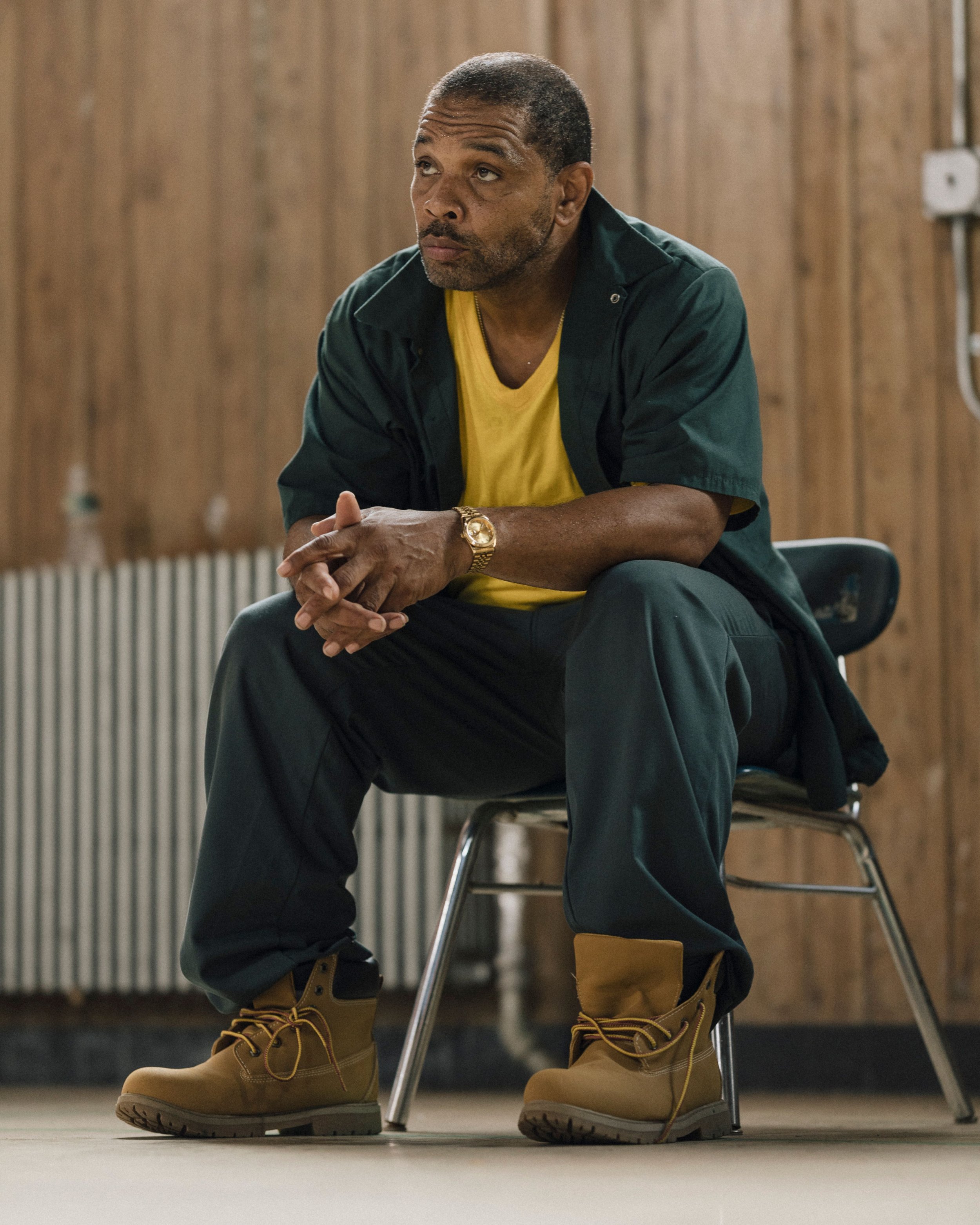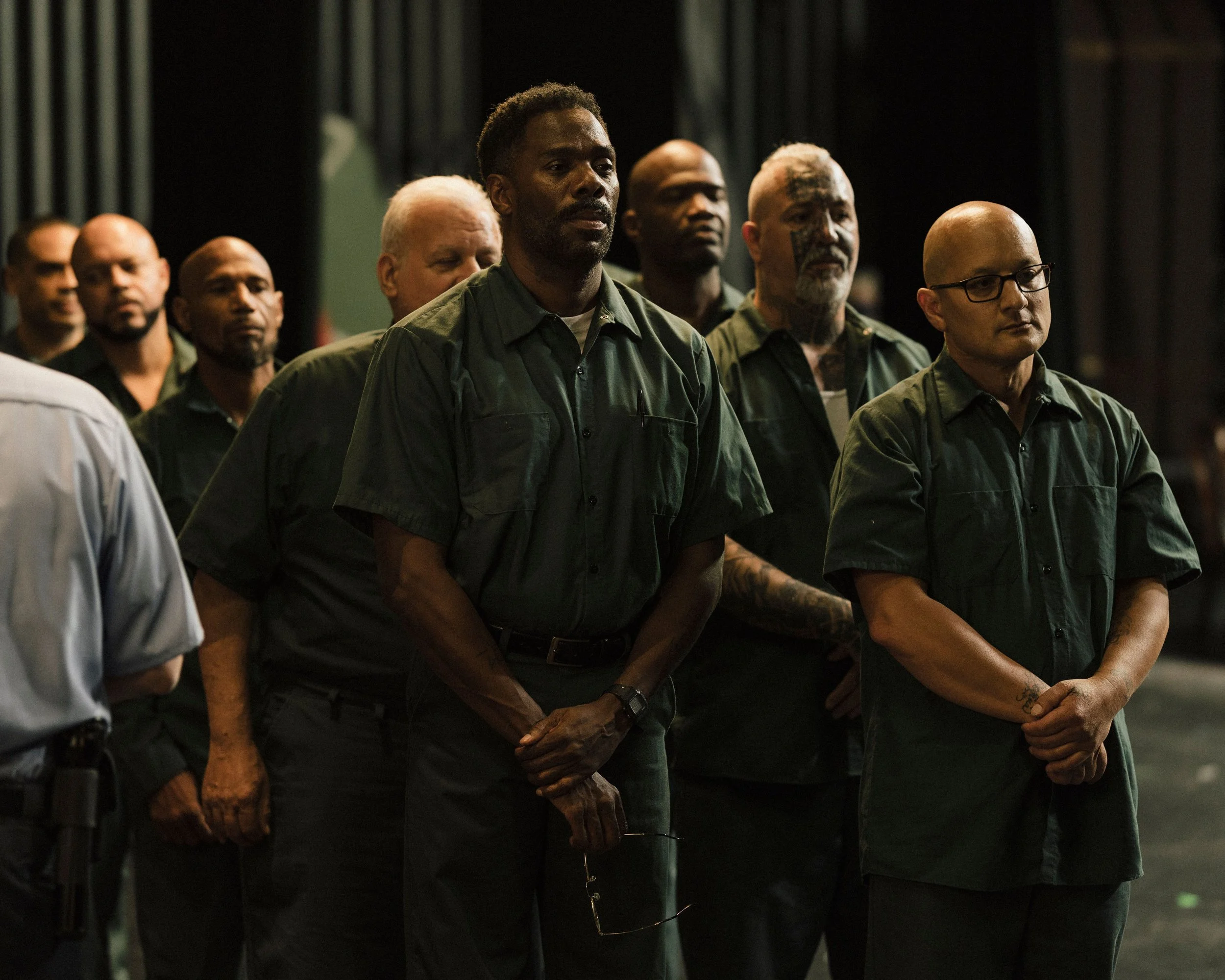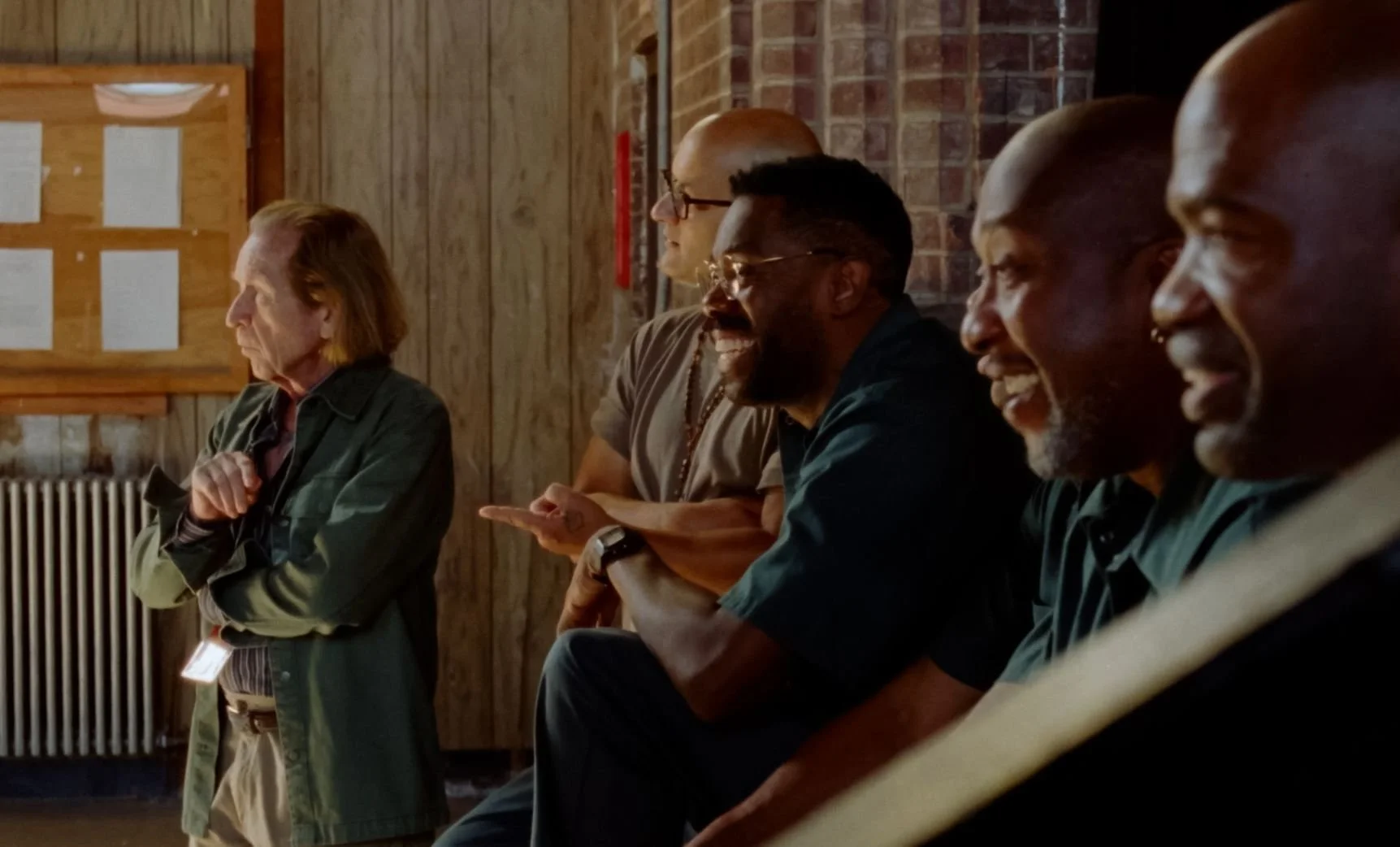MOVIE REVIEW: Sing Sing
SING SING— 5 STARS
There’s a key scene around the middle of Sing Sing where you watch a bouquet of cinematic flowers bloom in real time. Matching the title, the setting is the dubious Sing Sing Correctional Facility on the Hudson River outside New York City. A group of less than a dozen middle-aged male inmates are meeting for a sharing exercise as prospective actors for the Rehabilitation Through the Arts program. Their task, defined by their program director Brett Buell, played by Sound of Metal Oscar nominee Paul Raci, sitting in is to imagine a perfect time and place.
In this meditation circle, each man submits their vision, explaining it in nuanced and excitable details, and their stern faces as convicted felons melt away into men with radiant hearts and minds. The memories and dreams being shared are presented as emotional anchors for the men, expanding beyond the roles they are preparing for as actors. During this activity, their shared vulnerability is palpable and the sense of belonging, even behind bars and walls, is tremendous. Their willingness and openness are fervent and heartrending. One man says about this opportunity, “We’re here to become human again; to put on nice clothes and get away.”
LESSON #1: THE GENUINENESS OF PERFORMERS– To hear that incarcerated individual speak that thought with conviction and care is a moving moment amid a consecutive rotation of one after another. The actors sell their sentiments perfectly and for good reason. Every man in that circle not named Paul Raci and fellow Oscar nominee Colman Domingo, are playing themselves. They are alumni of Sing Sing and, once upon a time, they sat in those same positions and chairs with those distant thoughts and dreams. When you step back, realize, and–most important of all– appreciate that aspect of Sing Sing, you understand how the genuineness of the performers involved could not be any higher.
That personal effect achieved through casting is a hell of a thing and one expanded throughout Sing Sing’s storyline. Unlike outside actors trying on characters they’ve researched for a few months in the hope of doing them justice, Sing Sing laminates its dramatic license with a layer of authentic courage. We’re watching formerly incarcerated men relive experiences from painful years with invigorated pronouncement. By sharing them with the world now through a tribute film, their honor and liberation are multiplied.
Written by Clint Bentley (Jockey) and director Greg Kwedar (Transpecos), Sing Sing recounts one theatrical season of the RTA program. They have just finished Shakespeare’s A Midsummer Night’s Dream and Brett Buell is spurring the group to recruit new members and brainstorm what to perform next. The unofficial leaders of the troupe are John “Divine G” Whitfield (Domingo), a prolific amateur playwright who always has a script or two waiting in the wings, and his cell neighbor Mike Mike (Campo Santo co-founder Sean San José). The only new blood they find is a boss-of-the-yard rough customer named Clarence “Divine Eye” Maclin (playing himself), who’s looking at the RTA as a way to get out of other work duties.
The arrival of Divine Eye initially jostles the usual copasetic climate of the RTA team fostered by Brett. His blunt and barbed suggestions to do something funnier than The Bard take hold in the group, much to the dismay of the normally serious Divine G. After collecting and settling on ideas, Buell pens the original time travel comedy Breakin’ The Mummy’s Code, a kitchen sink collection of zany characters from Ancient Egypt to Prince Hamlet and Freddy Krueger. As Sing Sing progresses, the men “trust the process” to hone their roles from script to rehearsal. All the while, this film is still bound to its prison setting of cell inspections, yard time, safety drills, lineups, and rotating clemency hearings.
Sing Sing moves about with an intimate, voyeuristic camera steered by Pig and A Quiet Place: Day One cinematographer Pat Scola. Just as Scola’s closeups frame and bring you to brink of inner countenance, his wide shots loom to remind us of the solid boundaries of confinement. In this balanced way, the look of the film flows from rapturous to unflinching in a matter of moments when necessary. Meanwhile, Dandelion and Cyrano composer Bryce Dessner of The National threads a balm of a score that enlightens the performative scenes of the film with a veil of elegance to an ugly place.
LESSON #2: THERE’S A PERFORMER IN EVERYONE– In this new project, the men learn the difficulties and differences between playing angry, playing hurt, and the slippery, soul-baring slope of comedy as they pick roles they identify with. Just when you arrive at doubts as to how this motley crew will accept each other and pull of something as loose as Breakin’ The Mummy’s Code, we begin to witness the aforementioned blossoming of emerging talents and dedicated efforts. Shadowing the newbie that is Divine Eye, Sing Sing bestows upon its viewers the metamorphosis of hardasses who find a sense of belonging again while healing the regrets from past mistakes and guilts.
Coming off of an Academy Award nomination for Rustin, Colman Domingo follows that with even better and equally Oscar-worthy work here in Sing Sing. The man is theatricality personified. Big or small, there is no wasted movement, guise, diction, or gesture from Colman Domingo that is not meant for rapt attention. His devotion to this story meshes beautifully with the limitless spirit brought by the ensemble of RTA grads, each with their little moments to shine. Among them, none burn brighter than Clarence Maclin. His shared scenes with Domingo plotting the evolution of their bond are meaningful beyond measure. If Colman Domingo deserves awards consideration, then so does Maclin without hesitation.
LESSON #3: ALL PEOPLE DESERVE ART AND EXPRESSION– Larger than those performative nuts and bolts, the larger scope of Sing Sing is how all people deserve art and expression. The actors here seek their mindsets as performers from a low starting point and disconnected from the rest of the world. The Rehabilitation Through the Arts program provides purpose for men to reach achievements above sometimes scant hopes of life beyond their sentences. In their safe spaces, art is restorative peace and empowered dignity. In presenting these heavenly heights of brotherhood and commitment with the truest possible representatives, Sing Sing is instantly one of the best prison films in movie history.
LOGO DESIGNED BY MEENTS ILLUSTRATED (#1221)










